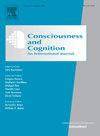自我优先化的时间轮廓。
IF 2
3区 心理学
Q2 PSYCHOLOGY, EXPERIMENTAL
引用次数: 0
摘要
个人相关性对决策处理具有强大的影响,因此与他人相关的相同材料相比,与自己相关的任意刺激会更快地被分类。尽管这种促进作用已被大量证明,但自我优先是否是决策过程中一种时间上稳定的结果仍不清楚。因此,本实验利用形状标签匹配任务结合计算模型,对这一问题进行了研究。实验结果很有启发性。首先,无论比较的目标是什么(即朋友还是陌生人),自我优先化都是整个测试过程中决策的持续产物。其次,标准漂移扩散模型的变体,即决策边界在任务过程中逐渐崩溃,最符合观察到的数据。第三,在任务过程中,与他人相关的刺激物的刺激处理效率会提高,而与自身相关的材料的刺激处理效率则会降低。总之,这些发现有助于人们理解自我优先化的时间轮廓。本文章由计算机程序翻译,如有差异,请以英文原文为准。
The temporal profile of self-prioritization
Personal relevance exerts a powerful influence on decisional processing, such that arbitrary stimuli associated with the self are classified more rapidly than identical material linked with other people. Notwithstanding numerous demonstrations of this facilitatory effect, it remains unclear whether self-prioritization is a temporally stable outcome of decision-making. Accordingly, using a shape-label matching task in combination with computational modeling, the current experiment investigated this matter. The results were informative. First, regardless of the target of comparison (i.e., friend or stranger), self-prioritization was a persistent product of decision-making across the testing session. Second, a variant of the standard drift diffusion model in which decisional boundaries collapsed gradually over the course of the task best fit the observed data. Third, whereas the efficiency of stimulus processing increased for other-related stimuli during the task, it decreased for self-related material. Collectively, these findings advance understanding of the temporal profile of self-prioritization.
求助全文
通过发布文献求助,成功后即可免费获取论文全文。
去求助
来源期刊

Consciousness and Cognition
PSYCHOLOGY, EXPERIMENTAL-
CiteScore
4.30
自引率
8.30%
发文量
123
期刊介绍:
Consciousness and Cognition: An International Journal provides a forum for a natural-science approach to the issues of consciousness, voluntary control, and self. The journal features empirical research (in the form of regular articles and short reports) and theoretical articles. Integrative theoretical and critical literature reviews, and tutorial reviews are also published. The journal aims to be both scientifically rigorous and open to novel contributions.
 求助内容:
求助内容: 应助结果提醒方式:
应助结果提醒方式:


